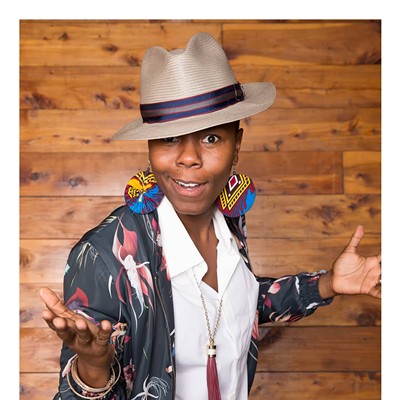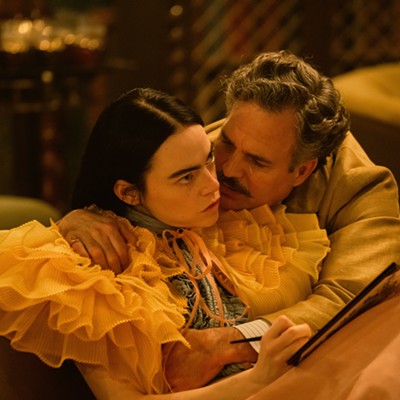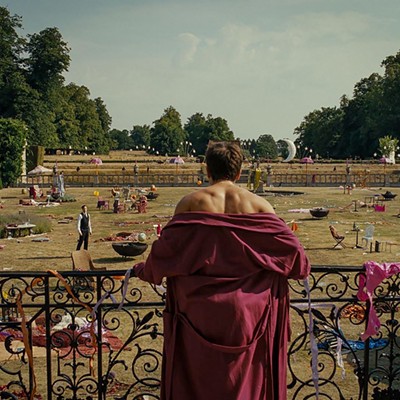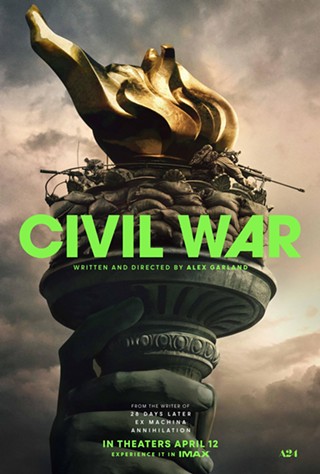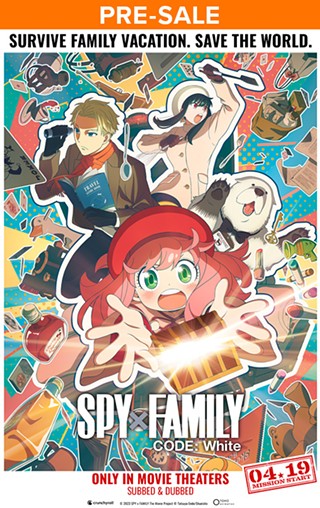The media has typically emphasized Tijuana's existence as America's id: a hub of narcotics traffic and prostitution; a socio-political live wire that has come to epitomize the border itself, immigration issues and all. But these images of Tijuana didn't strike Hans Fjellestad, the documentary's director, as Tijuana's definitive identity.
"A lot of that [sin city] identity was constructed as a response to Americans going down there" and behaving in ways "they might not behave at home." This personality was not based on the city's true identity, says Fjellestad.
To Fjellestad, Tijuana has an intensity "where the place actually works on the individual more than the individual works on the place ... In my mind Tijuana has that kind of complexity."
Fjellestad has attempted to capture this complex identity in the film Frontier Life and will be here for its screening in Tucson on September 20 at Club Congress.
But why make a documentary about Tijuana now?
The reason, says Fjellestad, is that Tijuana has just started constructing an identity in the last five to 10 years. "There's all kinds of projects going on in all disciplines: the arts and in all kinds of cultural areas so it's a very exciting place to be. I wanted to put the audience in the middle of that."
In the 90-minute film, Fjellestad estimates, there are 30 seconds devoted to the red light district because "it's important, but not our focus."
The focus of Frontier Life is the idea of a city coming into its own.
"Tijuana is a young city," says Fjellestad, "and, like a lot of border towns, was a place designed to be transitional for trade, smuggling or whatever ... So it's always had this vibe of not being a real city but as a staging area for jumping across the border."
What further complicates Tijuana's identity is that the city "is essentially a Third-World environment slammed up against a city [San Diego] that is one of the richest in one of the richest states in the richest countries in the world. That has to create a certain amount of tension and pressure. And I think when you find that kind of energy, you find an amazing amount of invention and improvisation," says Fjellestad.
Fueling this improvisation is peoples' struggle for day-to-day survival. "Tijuana only has a third of the resources for a population their size," about 2 million, Fjellestad says.
But now that the population has been there for a while, Fjellestad believes the third generation of Tijuanans are coming of age, which has resulted in the construction of "an identity in a place that's ready to look at itself."
To document this reflection, Frontier Life uses three focal points in which the audience is invited to peer into the border town. The film interweaves stories on Tijuana's drag racing scene, wastewater treatment and Nortec music scene (a techno music hybrid that comes from the area, which provides the film's soundtrack).
"The film has its own internal logic, but [the three stories] fit together in some interesting ways," says Fjellestad.
The underground street racing clubs exemplify one layer of artistry that makes up Tijuana's identity, an identity that wouldn't have been captured if it weren't for the efforts of co-producer and Tijuanan Ivan Diaz-Robledo cultivating those relationships.
Then there are all the disciplines of art that fall under the banner of Nortec. "There are all kinds of visual art and architecture and clothing, video and film all anchored around the music," says Fjellestad. The Nortec Collective, a term which has come to stand for the entire aesthetic instead of any particular group or artist, has "developed a sound and a look that the younger generation has identified with as being from Tijuana. And I think that's one of the first times that has actually happened where it's not a very obvious fusion or appropriation from other regions of Mexico, the US, or Europe."
Fjellestad, who is also a San Diego musician, met several of the Nortec musicians featured in Frontier Life years ago, before he planned to make the film. But he knew he wanted to work more with these musicians and in the end the "Nortec aesthetic" influenced the documentary because it "influences what border culture art is ... their sound and feel and look" represent the movement on the border, says Fjellestad. "Whether they're cutting and pasting from the environment around them or whether they are taking the sound of Tijuana over to Europe or Japan and crossing borders of the local and the global or crossing borders of the pop art and the folk art with the more fine art. They signify what the film's about."

